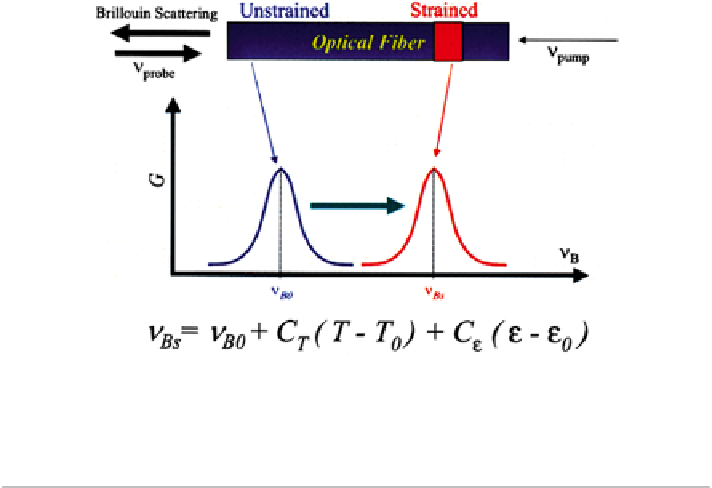Environmental Engineering Reference
In-Depth Information
Since the change in frequency for the Brillouin photon is a function of both
temperature and strain but that of the Raman photon is only dependant on temperature,
both are needed to fully describe the DTS and DAS measurements as a function of
depth. Figure
14.3
illustrates the principle of operation of the Brillouin sensor.
To place these measurements and their physical basis into perspective the reader
is directed to Fig.
14.4
that summarizes the Raman and Brillouin backscattering
along with their Stokes and Anti-Stokes components. Suffice that the technology
now exists for a well (pipeline, stock tank or other surface facility) to be equipped
with sensors that have the potential to indicate temperature and pressure practically
every foot of the way from surface to TD and to do so many times each and every
minute of the day.
Fig. 14.3
Principle of opera-
tion of Brillouin sensor.
Courtesy OZ Optics
DAS (DSTS or DTSS) Applications
Having DAS, an operator is capable of real-time continuous monitoring of sound
noise, temperature, and strain. Briefly, DAS applications include the aforemen-
tioned DTS applications and the following:
Corrosion and leak detection
(downhole and surface pipeline, pressure ves-
sels, etc.).
Crack detection
(cement bond and casing failure).
Fluid flow inside tubulars
(during hydraulic fracturing process or acidizing, check-
ing the ball actuated sleeves in multistage horizontal fracturing).

Search WWH ::

Custom Search